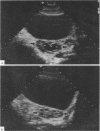Abstract
Polycystic ovaries were defined with ultrasound imaging in a series of 173 women who presented to a gynaecological endocrine clinic with anovulation or hirsutism. Polycystic ovaries were found in 26% of women with amenorrhoea, 87% with oligomenorrhoea, and 92% with idiopathic hirsutism--that is, hirsutism but with regular menstrual cycles. Fewer than half the anovulatory patients with polycystic ovaries were hirsute, but in 93% of cases there was at least one endocrine abnormality to support the diagnosis of polycystic ovaries--that is, raised serum concentrations of luteinising hormone, raised luteinising hormone: follicle stimulating hormone ratio, or raised serum concentrations of testosterone or androstenedione. This study shows that polycystic ovaries, as defined by pelvic ultrasound, are very common in anovulatory women (57% of cases) and are not necessarily associated with hirsutism or a raised serum luteinising hormone concentration. Most women with hirsutism and regular menses have polycystic ovaries so that the term "idiopathic" hirsutism no longer seems appropriate.
Full text
PDF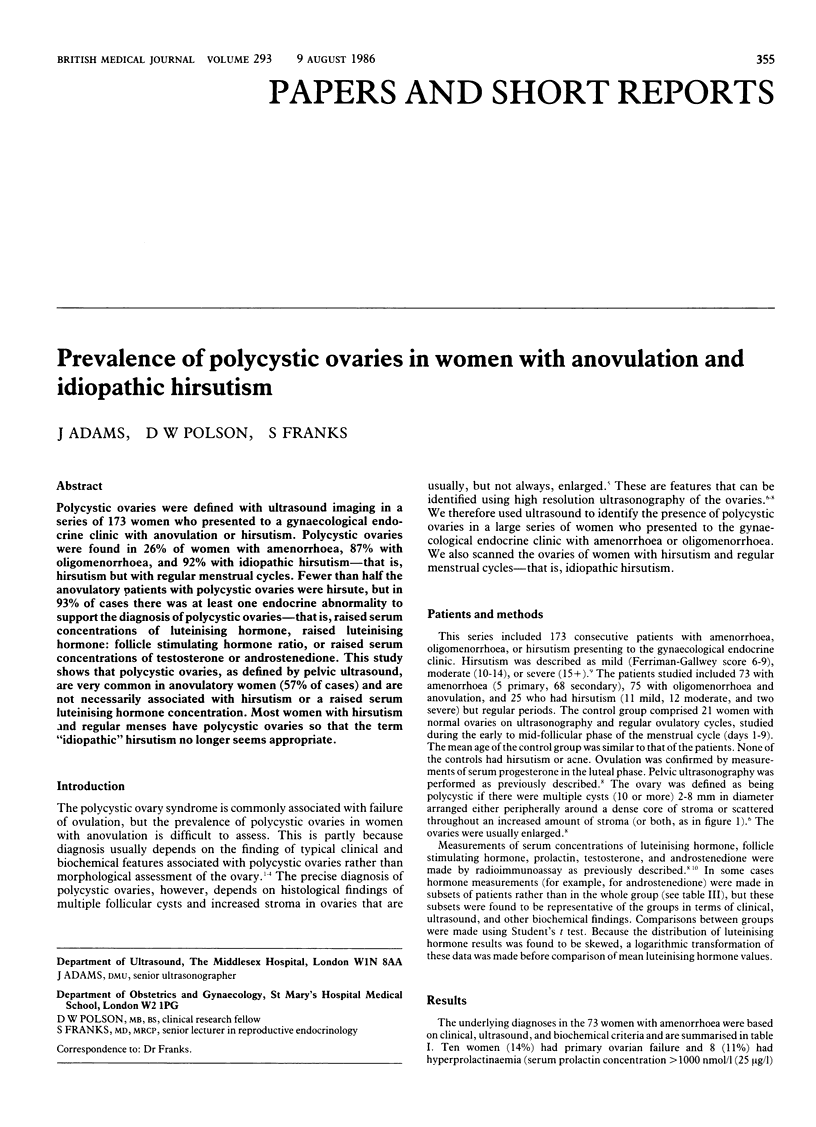
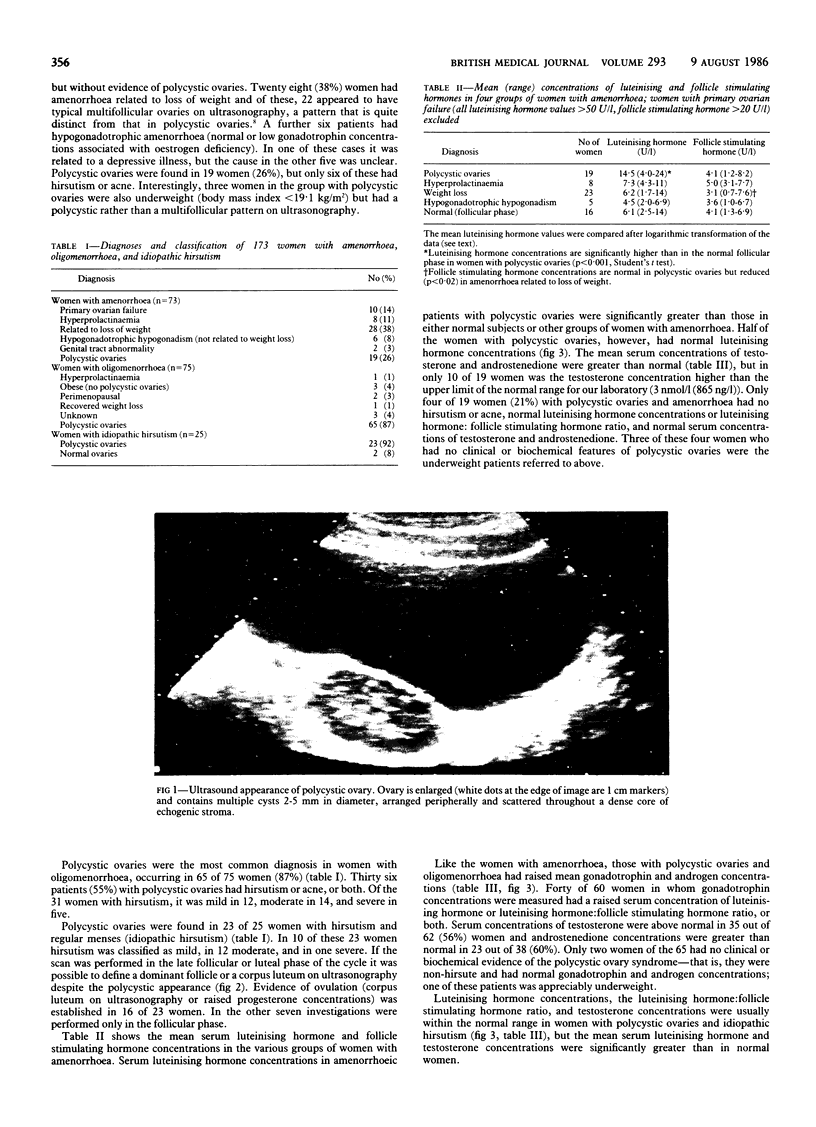
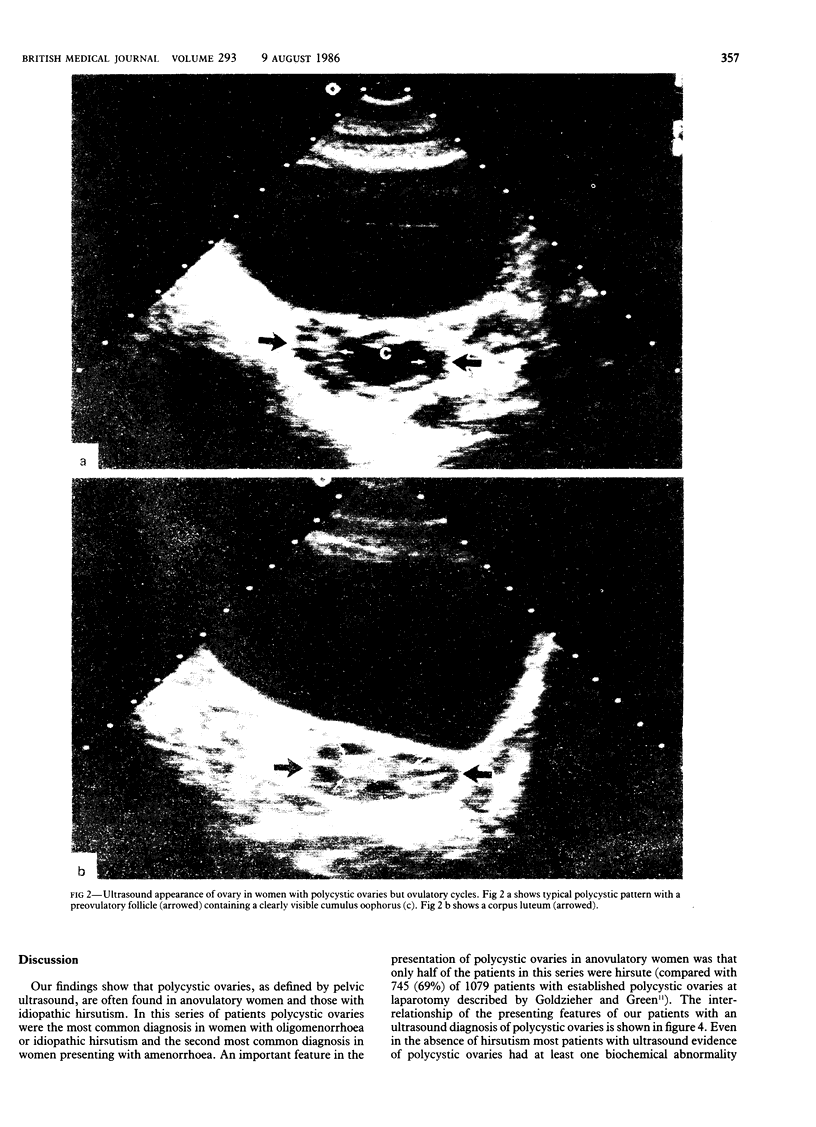
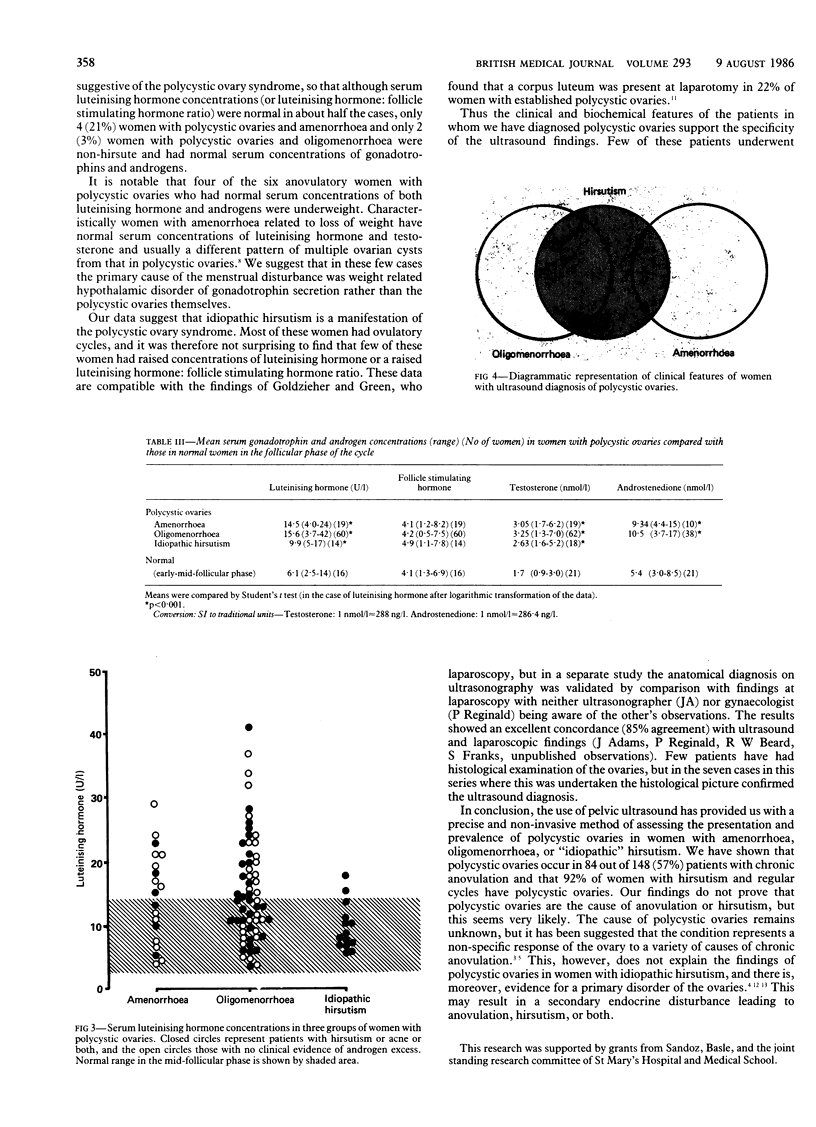
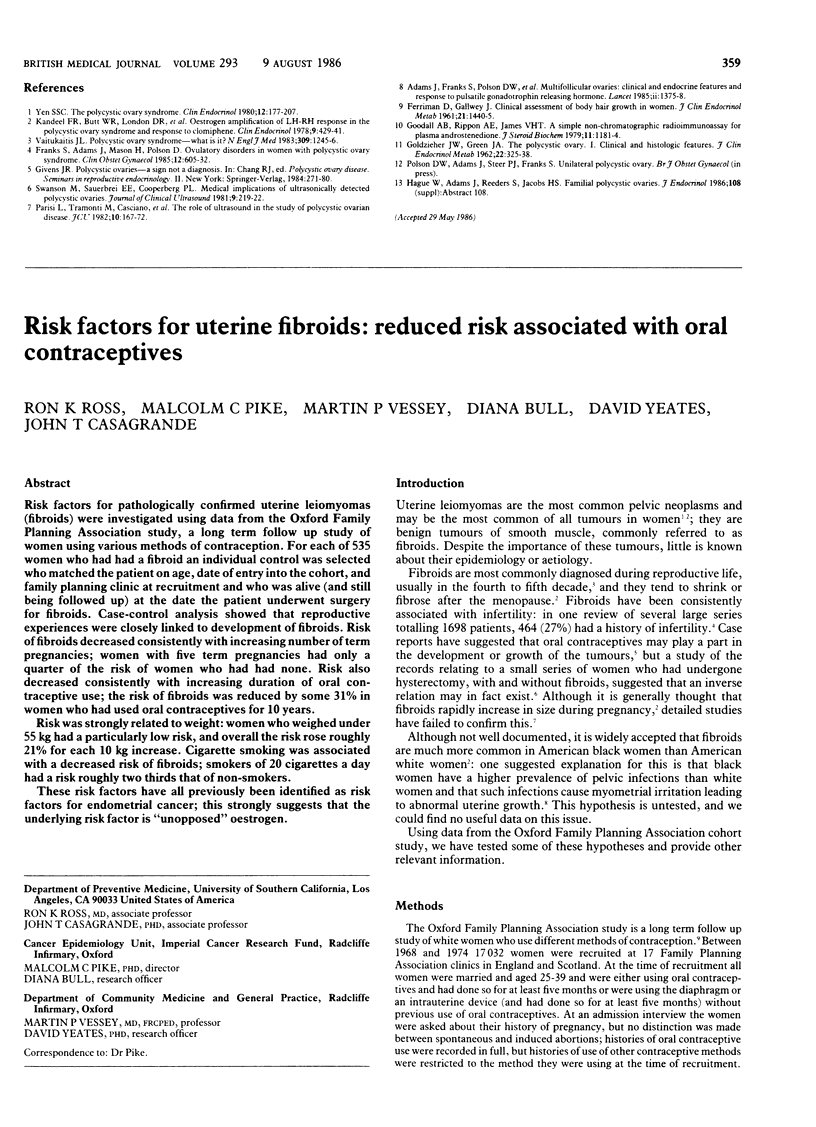
Images in this article
Selected References
These references are in PubMed. This may not be the complete list of references from this article.
- Adams J., Franks S., Polson D. W., Mason H. D., Abdulwahid N., Tucker M., Morris D. V., Price J., Jacobs H. S. Multifollicular ovaries: clinical and endocrine features and response to pulsatile gonadotropin releasing hormone. Lancet. 1985 Dec 21;2(8469-70):1375–1379. doi: 10.1016/s0140-6736(85)92552-8. [DOI] [PubMed] [Google Scholar]
- FERRIMAN D., GALLWEY J. D. Clinical assessment of body hair growth in women. J Clin Endocrinol Metab. 1961 Nov;21:1440–1447. doi: 10.1210/jcem-21-11-1440. [DOI] [PubMed] [Google Scholar]
- Franks S., Adams J., Mason H., Polson D. Ovulatory disorders in women with polycystic ovary syndrome. Clin Obstet Gynaecol. 1985 Sep;12(3):605–632. [PubMed] [Google Scholar]
- GOLDZIEHER J. W., GREEN J. A. The polycystic ovary. I. Clinical and histologic features. J Clin Endocrinol Metab. 1962 Mar;22:325–338. doi: 10.1210/jcem-22-3-325. [DOI] [PubMed] [Google Scholar]
- Kandeel F. R., Butt W. R., London D. R., Lynch S. S., Edwards R. L., Rudd B. T. Oestrogen amplification of LH-RH response in the polycystic ovary syndrome and response to clomiphene. Clin Endocrinol (Oxf) 1978 Nov;9(5):429–441. doi: 10.1111/j.1365-2265.1978.tb03583.x. [DOI] [PubMed] [Google Scholar]
- Parisi L., Tramonti M., Casciano S., Zurli A., Gazzarrini O. The role of ultrasound in the study of polycystic ovarian disease. J Clin Ultrasound. 1982 Apr;10(4):167–172. doi: 10.1002/jcu.1870100405. [DOI] [PubMed] [Google Scholar]
- Vaitukaitis J. L. Polycystic-ovary syndrome--what is it? N Engl J Med. 1983 Nov 17;309(20):1245–1246. doi: 10.1056/NEJM198311173092010. [DOI] [PubMed] [Google Scholar]
- Yen S. S. The polycystic ovary syndrome. Clin Endocrinol (Oxf) 1980 Feb;12(2):177–207. doi: 10.1111/j.1365-2265.1980.tb02132.x. [DOI] [PubMed] [Google Scholar]




